“We are on the verge of a global transformation. All we need is the right major crisis and the nations will accept the New World Order.”
– David Rockefeller
The Rockefeller Foundation may be remembered as the primary financier of Alfred Kinsey’s “scientific” studies which helped to usher in massive changes to US and European society in the 1950s and 1960s. The much cultivated origins of their philanthropic deeds are still going strong in the form of the Rockefeller Foundation now based at 420 Fifth Avenue, New York City. However, the Rockefeller legacy has had more to do with public relations and the continuance of an ideological brand of corporatism than the official, mission “to promote the well-being of mankind throughout the world.” The dynasty has funnelled vast amounts of money into areas as diverse as construction, medical health, population sciences, agricultural and natural sciences, arts and humanities, social sciences, oil, education, economics, conservation and international politics, they have exacted an unparalleled influence over American society.
The Brothers Rockefeller (from left to right) are: David, the last surviving Grand-child of oil magnate John D. Rockefeller. Until recently he was Chairman of the Board of the Council on Foreign Relations and the Chase Manhattan Bank; Winthrop (deceased); John D. III (deceased) Nelson and Laurance. The Rockefeller Brothers Fund (RBF) was set up in 1940 to fund international, philanthropic endeavours. The Rockefeller Foundation has a more independent remit.
The Rockefeller family made its largest fortune in the oil business, primarily through their company Standard Oil during the late 19th and early 20th century. Their long financial association with the Chase Manhattan Bank and JP Morgan finally merged their interests to form JP Morgan Chase in 2009. Alongside Goldman Sacs, they profited hugely from the 2008 financial warfare that consolidated and centralised their global wealth into trusted mergers. No one knows the combined wealth of the family’s assets and investments but with the backing of the Rothschilds since the days of Milner and the Round table, it is likely to be very much more than substantial.
The same old boys’ network is in evidence within the banking fraternities from whom the Rockefellers extract maximum financial dividends traditionally passed only to male family members. Shares in the successor companies to Standard Oil, real estate holdings and many other diversified investments are overseen by a hand-picked and powerful trust committee headed by a revolving door of high-profile individuals drawn from Wall St., commerce and academia. A whole team of professional money managers are employed to look after the principal holding company, Rockefeller Financial Services which falls into five main branches:
- Rockefeller & Co.
- Venrock Associates (Venture Capital)
- Rockefeller Trust Company (Managing hundreds of family trusts)
- Rockefeller Insurance Company (Managing liability insurance for family members)
- Acadia Risk Management (Insurance Broker for the art collections, real estate and private planes.)
The total philanthropic donations from two generations of the family amounted to over $1 billion from 1860 to 1960. In November 2006, the New York Times reported that the present family patriarch David Rockefeller and his total charitable benefactions amount to about $900 million over his lifetime. [1] That’s an extraordinary figure. However, the question of whether the philanthropy was (and is) an unsullied wish to assist mankind or merely another manipulative mask in a box of corporate tricks could be argued long into the night. True philanthropy is surely unconditional and without an agenda of any kind. Everything the Rockefellers do has its origins in the desire to shape humanity’s development towards its own perception of reality. As author and journalist Gary Allen observed in his book The Rockefeller File: “By the late nineteenth century, the inner sanctums of Wall Street understood that the most efficient way to gain a monopoly was to say it was for the ‘public good’ and ‘public interest.’” [2]History shows this to be the case so we can logically assume that the legacy of philanthropy has been extremely successful in offering a cover for their less well known activities throughout American and British socio-cultural change.
There were some who saw through the mask of philanthropy to the real consequences of his actions.
“Some even believe we (the Rockefeller family) are part of a secret cabal working against the best interests of the United States, characterizing my family and me as ‘internationalists’ and of conspiring with others around the world to build a more integrated global political and economic structure—one world, if you will. If that’s the charge, I stand guilty, and I am proud of it.”
– David Rockefeller, Memoirs, page 405
***
“We are grateful to The Washington Post, The New York Times, Time magazine, and other great publications whose directors have attended our meetings and respected their promise of discretion for almost forty years. It would have been impossible for us to develop our plan for the world if we had been subject to the bright lights of publicity during those years. But the world is now more sophisticated and prepared to march towards a world government. The super-national sovereignty of an intellectual elite and world bankers is surely preferable to the national auto-determination practiced in past centuries.”
– David Rockefeller, at a 1991 Bilderberger meeting
***
“But this present window of opportunity, during which a truly peaceful and interdependent world order might be built, will not be open for long. Already there are powerful forces at work that threaten to destroy all of our hopes and efforts to erect an enduring structure of global interdependence.”
– David Rockefeller, speaking at the Business Council for the United Nations, September 14, 1994
***
“Whatever the price of the Chinese Revolution, it has obviously succeeded not only in producing more efficient and dedicated administration, but also in fostering high morale and community of purpose. The social experiment in China under Chairman Mao’s leadership is one of the most important and successful in human history.”
– David Rockefeller, statement about Mao Tse-tung in The New York Times, August 10, 1973
The early part of the 20th century saw John D. Rockefeller and his brother William Avery carve out a permanent place in US history to all but replace the Presidents’ heads carved out of the mountains at Rushmore. With many social “face-lifts” to fit the culture of the day, the Rockefellers have been responsible for funding and promoting some of the most potent social engineering projects in America over the last one hundred years. The reason was to create an American populace that is preoccupied, docile, apathetic and ultimately accepting of a new form of global feudalism; this has always been the aim of the family and its agencies. Monopolistic control of business and people was the key driver of its ascendancy. Since politics and money are synonymous to the Rockefellers, they have been particularly busy influencing political candidates and their parties towards the goals they hold so dear.
In 1927, as a prelude to the coming Great Depression New York City Mayor John F. Hylan didn’t mince his words in an interview he gave to the New York Times. They remain as relevant now as they did then:
“The real menace of our republic is this invisible government which like a giant octopus sprawls its slimy length over city, state and nation. Like the octopus of real life, it operates under cover of a self-created screen … At the head of this octopus are the Rockefeller Standard Oil interests and a small group of powerful banking houses generally referred to as international bankers. The little coterie of powerful international bankers virtually run the United States government for their own selfish purposes. They practically control both political parties.”
It was the ruthlessness and unswerving passion for making money that probably drew the attention of the House of Rothschild in using the Rockefellers as yet another agent for its global financial Empire. The Establishment families have an incestuous relationship across all domains, which is why so much of their funding has been thrown at political organisations and institutions that they either helped to create or best served their financial, political and ideological interests. Its support for a virtual “Who’s Who” of the Establishment speaks volumes.
John D Rockefeller’s Standard Oil company characterized as an evil octopus a common sentiment of the time. | Reproduced by the National Humanities Center Research Triangle Park, NC, 2005. Courtesy Library of Congress.
The promotion of cartel-capitalism is the Rockefeller’s’ overriding principle of world advancement. Many of these groups and their beliefs are unknown to the public and outside any democratic framework despite exerting a powerful “invisible hand” on political discourse. Most candidates in successive US administrations have been members of or affiliated to these organisations, a fact which should cause concern. As well as its funding of the Council on Foreign Relations War and Peace Studies that advised the US State Department and the US government on World War II strategy and forward planning, other long time beneficiaries include a legion of think-tanks, trusts, foundations, organisations, NGOs, and federal agencies. The most well-known of these is the Royal Institute of International Affairs (RIIA) in London; London School of Economics; the Washington-based Carnegie Endowment for International Peace; the Brookings Institute and the World Bank.
These tentacles also reached a number of Universities such as Harvard, Yale, Colombia, McGill and Princeton University and the University of Lyon in France who benefit from grant funding, in particular the research in social sciences, natural sciences and medicine. Steady support for ideologies dear to their hearts include the Population Council of New York; Social Science Research Council (funding for fellowships and grants-in-aid); National Bureau of Economic Research; the new building of the medical school during the 1920s-1930s and the Trinidad Regional Virus Laboratory. An emphasis on economics, social science and population control is always evident.
The Rockefeller Foundation is ranked among the most influential NGOs in the world with 2010 assets totalling $3.5 billion with annual grants of over $139 million. [3] With a state charter for the foundation being granted by the New York Mayor in 1913 along with their many trusts that would emerge over the intervening years, this allowed a large portion of the Rockefeller’s fortune to fall outside the requirements for inheritance tax and therefore insulated from government and IRS control. When big money meets politics behind closed doors you can be sure that notions of transparent democracy cease to apply. In its first decade of socio-political influence, the Rockefeller foundation concentrated entirely on the sciences, public health and medical education. They knew that in order to affect long-term change according to their own agenda, it needed to be comprehensive and seemingly benevolent mask rather than at its core, an ideological and political one.
It was also in 1913 that the foundation set up the International Health Commission launching the foundation into international public health activities and forging the reputation to fund research into diseases in fifty-two countries on six continents and twenty-nine islands. The Commission established and endowed the world’s first school of Hygiene and Public Health at Johns Hopkins University and later at Harvard. It then spent more than $25 million developing other public health schools in the US and in 21 foreign countries, helping to establish America as the world leader in medicine and scientific research. In the same year, it began a 20-year support program of the Bureau of Social Hygiene, whose mission was research and education on birth control, maternal health and sex education. Once again, this emphasis was key.
John D. Rockefeller, Jr. became the foundation chairman in 1917 and a year later, established The Laura Spelman Rockefeller Memorial, named after his mother, shifting the focus of philanthropy more deeply into the social sciences, stimulating the founding of university research centres and creating the Social Science Research Council. This memorial fund was subsequently absorbed into the foundation in a major reorganisation in 1928/9.
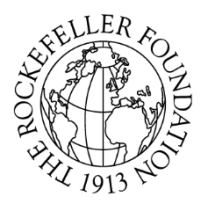 The foundation also supported the early initiatives of notorious geo-political manipulator Henry Kissinger, such as his directorship of Harvard’s International Seminars and the early foreign policy magazine Confluence, both established by him while he was still a graduate student. Kissinger is the equivalent of the Shakespearian character of Iago in “Othello” whose job it is to play one group, government or individual against each other without them ever discovering the source of the intrigue. As an agent of the Rockefellers, Kissinger has been involved in every shady, geo-political form of skulduggery since he was National Security Advisor to Nixon and is seen as an elder geo-political statesman – the public face of those we rarely, if ever get to see. He has perhaps done more than anyone in contouring American politics and society towards Rockefeller and Elite objectives. It was he who spear-headed the concept of food as a weapon forged from the very same think-tanks and organisations we have been discussing.
The foundation also supported the early initiatives of notorious geo-political manipulator Henry Kissinger, such as his directorship of Harvard’s International Seminars and the early foreign policy magazine Confluence, both established by him while he was still a graduate student. Kissinger is the equivalent of the Shakespearian character of Iago in “Othello” whose job it is to play one group, government or individual against each other without them ever discovering the source of the intrigue. As an agent of the Rockefellers, Kissinger has been involved in every shady, geo-political form of skulduggery since he was National Security Advisor to Nixon and is seen as an elder geo-political statesman – the public face of those we rarely, if ever get to see. He has perhaps done more than anyone in contouring American politics and society towards Rockefeller and Elite objectives. It was he who spear-headed the concept of food as a weapon forged from the very same think-tanks and organisations we have been discussing.
1954 was a pivotal year for David Rockefeller’s global aspirations. The Bilderberg Group was founded and The Conference on International Politics, sponsored by the Rockefeller Foundation was convened in Washington, D.C., in the same month. The leading lights of post-war political science were brought together including: Walter Lippmann, Kenneth W. Thompson, Hans Morgenthau, Kenneth N. Waltz, Paul Nitze, Arnold Wolfers, and Reinhold Niebuhr among others. The Rockefeller Foundation’s president chaired the conference while Waltz and Thompson helped to organize the meeting and discussions. The official objective was to explore “the state of theory in international politics” [4]
Though some commentators believe that there was a failure to arrive at a consensus towards unified theory of international relations, this was never the intention. By gathering together so many luminaries in the field of neo-realism as per the Rockefeller formula, their target was to assess an exact state of play in order to begin steering societies in the required direction at certain junctures. What better way to do this than to scan the greatest minds and extract the information? Perhaps even head-hunt the best and brightest to join the Foundation?
Kenneth W. Thompson was obviously singled out by the Foundation as a useful tool. In 1955, less than a year after the first Bilderberg conference he began working for the Rockefeller Foundation eventually becoming Vice President for International Programs, specialising in the area of institutional philanthropy and no doubt contributing – knowingly or unknowingly – to the Rockefellers’ fine-tuning of the field. As author Nicolas Guilhot observes: “One might reasonably ask whether, had he not played a crucial role within the Rockefeller Foundation for several decades, the field of IR would be the same, or whether it would exist at all.” [5]And that is surely the most obvious point of the whole conference: it was an exercise in establishing a dominant view of international relations under the cover of exploring diversity and economic prosperity. As political scientist professor Robert E. Muller Jr. comments, the conference may have helped establish:
“… a discipline separate from political science and rooted in an understanding of power politics and national interest dictated by the exigencies of the moment. And in this way, it may have invented the international relations theory that guided the thinking of American policy-makers well into the Vietnam era.” [6]
This is exactly where the Rockefeller Foundation excels.
A familiar political philosophy for the Elite families is derived from the fusion of Marxism and Capitalism; collectivism and fascism. These beliefs are attractive to corporatist families like the Rockefellers because they offer what they consider to be the best of both worlds. China is the best example since it incorporates both which is why the Rockefeller Foundation played an important role in rebuilding intellectual ties across the Atlantic after the Second World War. They did this by using their vast storehouse of money to be the self-appointed catalyst for increasing the hybridisation of Western capitalist ethos and communist-Marxist ideas via intellectual refugees and American thinkers. It is this literal capitalisation of economic ideologies and their applications that most interests true corporatists. In their minds, it offers the best framework by which a global neo-feudalist state can manifest.
Rather than the “universalist” credentials that the Rockefeller Foundation liked to promote it was actually a mask for this economic hybrid. Rockefeller president Lindsay F. Kimball offered his own advice as to the perception of the foundation in his report from the 1950s:
“The Senate and FBI investigation of the Institute of Pacific Relations [a Rockefeller beneficiary] and the charges proffered by Representative Cox indicate the belief in at least a few minds, that the Rockefeller Foundation is either unwittingly giving support to the enemies of our country or is itself fuzzy-minded, unrealistic, and even pinkishly inclined.” [7]
Though unfashionable in its day due to the spectre of McCarthyism and the Cold War, this belied the fact that the Rockefellers were much more than “pinkishly inclined” but an active promoter of World State influences and communist ideology, unbeknownst to Kimball himself, though his highlighting of these conclusions were obviously borne from his own concerns. This was unlike many artists and intellectuals of the day who genuinely saw socialism, communism or Marxism as at least a new possibility for social change and a step away from the relentless materialism which had engulfed America.
Indeed, the communication between top level staff at the Foundation indicated that they were favourable towards socialist and communist intelligentsia. The most important field of enquiry for the Rockefeller Foundation is best summarised by Hugh Wilford, discussing the Foundation’s influence in his book: The New York Intellectuals: From Vanguard to Institution, where he asks the question: “Are thoughts organically formed? Is it possible to control or manipulate thoughts externally to make them fit into the goals of organisations such as foundations?” [8]
The answer is an unequivocal “yes.”
To that end, another significant program within the Rockefeller Foundation was its Medical Sciences Division, which extensively funded women’s contraception and the human reproductive system in general. Other funding went into endocrinology departments in American universities, human heredity, mammalian biology, human physiology and anatomy, psychology, and the pioneering studies of human sexual behaviour by Dr. Alfred Kinsey whom we looked at in the Sex Establishment.
This brings us to the core belief system of the Rockefellers and their comrades: social control largely based around eugenics – a pseudo-science as strong as it ever was in Elite circles. The Rockefellers have been responsible for funding social engineering projects with just such a belief at their root. In 1933, the president of the Rockefeller Foundation, Max Mason, proclaimed that “The social sciences … will concern themselves with the rationalisation of social control …” and this has remained so ever since. [9]
In 1952, John D. Rockefeller III founded the Population Council the presidency of which just happened to be none other than Frederick Osborn, leader of the American Eugenics Society who held the position until 1959. Nine years later he wrote: “Eugenic goals are most likely to be achieved under another name than eugenics.” And so it is. From Social Darwinism to the now to the more academically bland social biology and genetics.
General Motors, the Ford Foundation, IBM and others were all involved in supporting the Nazi regime that was both ideological, logistical and material. [10]The Rockefeller family was perhaps the most active in providing assistance to the Nazi Third Reich contributing to the speed of its rapid ascent to power. It is still largely unknown that right from the start of its creation by John D. Rockefeller, the Foundation served as a principle financier of the German Eugenics initiative and even funded the program on which Josef Mengele worked before he went to Auschwitz. [11]Successfully joining financial forces with the Carnegie Institute and the Harrimans,a host of American academics from prestigious universities such as Stanford, Yale, Harvard and Princeton happily embraced a racist, and fascist philosophy and practice existing in America at the time. The authoritarian nature of the eugenics belief was the basis upon which many of the institutions of the 1940s came into being.
When we understand that the updated, racist philosophy of Nazism is the driving force behind so called Rockefeller philanthropy and much of the Establishment’s world-view, we can begin to see the reasons for such support in a very different light. This is the reason why the Rockefeller Foundation’s main financial beneficiaries have been the very same organisations that have historically adhered to the same beliefs. Though it does not necessarily mean all subsequent generations of Rockefellers are cast in the same mold. However, the trajectory of the family and its objectives remain the same regardless of whether this is merely misguided results of brainwashed beliefs or the symptoms of inherited psychopathic traits.
The Rockefeller Foundation underwent a significant re-organisation in 1928 giving the opportunity for an agriculture department to be incorporated into the Natural Sciences division. In order to protect the family’s investments and to ostensibly guard against communist influence the Foundation gave a grant to the Mexican government for maize research, undertaken with the help of Nelson Rockefeller via the US government. Applying the principles of John D. Rockefeller’s meteoric success with Standard Oil the science of corn propagation and the new agriculture was to mark out the early 1940s as a landmark in the rise of large-scale mono-farming joining together with the commensurate rise in mechanisation and fast food economy in the US.
With close assistance from the Ford Foundation Latin America and India were the next in line to “benefit” from the vast experiment in agribusiness which would soon to be labelled the “Green Revolution” and the ultimate answer to poverty. In reality, expanding crop yields created the exact opposite by displacing farmers and their communities, creating ecological catastrophes, reducing biodiversity, lessening soil fertility and saturating the environment with pesticides from the new offshoot businesses of the agrichemical industry. In concert with international banking and commerce, far from solving the world’s poverty it served to increase it, even though the existence of food mountains would be a feature of modern farming methods parallel to famine and interstate war.
For the Rockefellers, searching for ever more efficient means of making money and redesigning humanity to a sophisticated serfdom meant using corporatism grafted onto the global ecology – stream-lining Nature’s bounty into a vast production line. It was only natural for the Foundation to support the advances in genetically modified organisms (GMO) foodstuffs and transgenic crop production where the eventual patenting of Nature herself became the economic goal. This conveniently merged with the ideas on eugenics and population control (as all goals towards centralisation ultimately do) best espoused by the Bill and Belinda Gates foundation who finance corporate-led, scientifically dubious vaccination and agriculture projects.
There is an important crossover towards the control of populations and how food, agriculture and technology can influence an outcome that is aligned to the belief system of the Rockefellers and their associates. The radical change from localised subsistence farming to the placing of power in a handful of agribusiness corporations has been in part, thanks to considerable Rockefeller funding. (Breaking the independent clusters of family farmers has always been an integral part of Elite-sourced technological “revolutions,” as we saw in “The Courage to Critique”) .To that end, generous financing has been poured into biotechnology research personified by trans-national corporation Monsanto which has a record of worker rights, environmental and business corruption unparalleled in corporate practice.
The wholly erroneous and disingenuous assumptions that GMO can solve the world’s food crisis, has nonetheless been given a healthy dose of support in industry and the MSM, where in reality, it is nothing more than another corporate tool of exploitation. For this to work members are activated within the auspices of humanitarian directives found the United Nations, WTO, IMF and The World Bank. They also need to appeal to the spiritual and occult-minded Elite presently residing in its most public face: The Lucis Trust, an occult organisation firmly embedded in the United Nations and its affiliated agencies.
“In 1917, John D. Rockefeller could have paid off the whole US public debt on his own. Today, Bill Gates’ entire fortune would barely cover two months’ interest.”
It was to be during the years between 1956 – 1960 that the Rockefeller Brothers’ Fund financed the Special Studies Projectwith the help of then President Nelson Rockefeller and directed by the ever faithful Henry Kissinger. This was to be a blueprint for the future, not for America but for the “global community.” The studies were published in a now hard to come by book entitled: Prospect for America: The Rockefeller Panel Reports. It is here that the full long-term nature of the World State philosophy can be discerned though suitably dressed up in euphemisms and platitudes. The objective of the studies were to create a long-term plan so that a progressive phasing in of a global government could materialise in a post-war environment. To do this large-scale social engineering was to take place using the Fabian method of gradualism so that the American people and eventually the world, would have no idea what was being sold to them. The future they have shaped has come of age.
(For more on these studies and Prospect for America please visit wwwredefininggod.com)
See also: James Corbett’s excellent series on Big Oil and the Rockefellers:
Notes
[1] ‘Manhattan: A Rockefeller Plans a Huge Bequest’By Stephanie Strom, The New York Times, November 21, 2006.
[2] The Rockefeller File By Gary Allen. Published by ’76 Press, 1976.
[3] Return of Private Foundation, or Section 4947(a)(1) Nonexempt Charitable TrustTreated as a Private Foundation 2010. Form 90-PF. | www. dynamodata.fdncenter.org/
[4] p.240; The Invention of International Relations Theory: Realism, the Rockefeller Foundation, and the 1954 Conference on Theory, by Robert E. Muller Jr.; Nicolas Guilhot, ed., New York: Columbia University Press, 2010.
[5] op. cit. Muller (p.15)
[6] Review of The Invention of International Relations Theory: Realism, the Rockefeller Foundation, and the 1954 Conference on Theory, Edited by Nicolas Guilhot in Ethics & International Affairs, July 12 2012. http://www.ethicsaninternationalaffairs.org
[7] ‘The Rockefeller Foundation vis a vis National Security,’ By Lindsley F. Kimball, November 19, 1951, folder 201, box 25, series 900, RG3, RFA, RAC.
[8] p.117; The New York Intellectuals: From Vanguard to Institution By Hugh Wilford, Manchester University Press, 1995 | ISBN-10: 0719039886
[9] Max Mason quoted in ‘Mental Health, Education and Social Control’ Part 2 By Dennis L. Cuddy, Ph.D., September 2004 | http://www.crossroad.to/articles2/006/cuddy/mental_health-2.htm
[10] IBM and the Holocaust: The Strategic Alliance between Nazi Germany and America’s Most Powerful Corporation. By Edwin Black, Second paperback edition, Washington, DC: Dialog Press, 2009 | ISBN 13: 9780914153108
[11] Ibid.
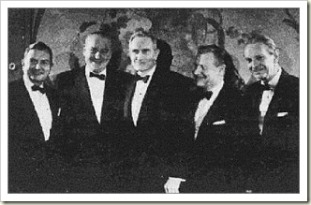
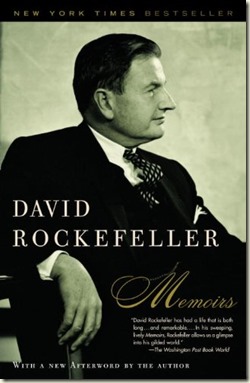
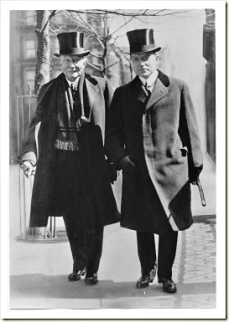

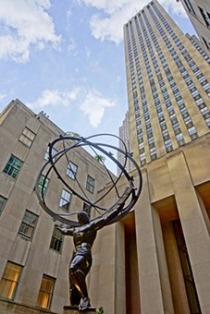
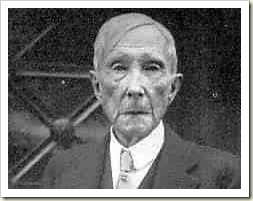
I’ve often heard the technocratic globalist argument that greater centralization and automation will lead to greater prosperity and increased productivity through economies of scale and the elimination of unnecessary labor.
It all sounds good on paper, but that is never how it occurs. Artificial barriers are always created in order to drive up the cost of living and keep us permanently fixated on a corporate/consumerist treadmill. True independence that would eliminate the engineered crises of global warming and overpopulation have been here for quite some time, but are actively discouraged. Why.
Given our level of technological development, it should be cheap and easy for someone to buy a plot of land, build their own modest house, and cultivate a modest homestead. There would be no need to undergo soul sucking hour long commutes, and a few year’s capital should be enough to afford the necessary land and materials.
But land has been artificially driven up in price through central bank and financial machinations, and tomes of residential construction legislation and permits have made it impossible for someone of a DIY temperament to build a house on land they “own”. No, everyone is corralled into the scenario where the only housing that meets regulations are suburban McMansions that require a lifetime of debt service, and are situated in districts with high property taxes.
If you wish to cultivate your own food crops, or perhaps even a modest garden, you become open to harassment from the homeowners association, or worse, government and law enforcement encroachment.
http://www.survivalsullivan.com/off-grid-illegal-in-us/
http://thefreethoughtproject.com/camping-land-illegal-homesteading-regulated-existence/
I’ve traveled to countries where a car isn’t necessary, as public transportation costs as little as $1 for a 15 minute ride as an individual, or $2 for a 2 hour ride on a bus. But of course, those means of transportation would not “meet regulations” here.
Those wishing to attain independence and self sufficiency are demonized and herded into a lifestyle of perpetual dependency. Technology exists that would allow us all to attain freedom, and to work at our leisure, but it is never wielded to those ends. We know why.
LikeLiked by 1 person